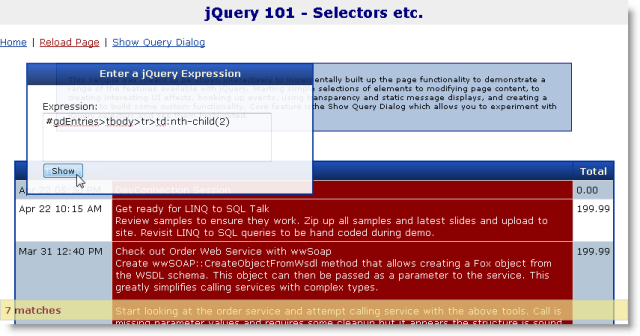

- #Tkinter popup window with entry how to
- #Tkinter popup window with entry update
- #Tkinter popup window with entry code
- #Tkinter popup window with entry windows
# remove this function and the call to protocol If t: root.after(int(t*1000), func=self.time_out) # if t is specified: call time_out after t seconds
#Tkinter popup window with entry windows
# a trick to activate the window (on windows 7) Root.protocol("WM_DELETE_WINDOW", self.close_mod) # call self.close_mod when the close button is pressed Geom = (root.winfo_width(), root.winfo_height(), xp, yp) Yp = (root.winfo_screenheight() // 2) - (root.winfo_height() // 2) Xp = (root.winfo_screenwidth() // 2) - (root.winfo_width() // 2)

# the enter button will trigger the focused button's action Message = tkinter.Label(frm_1, text=self.msg)ītn_1 = tkinter.Button(frm_2, width=8, text=b1)ītn_2 = tkinter.Button(frm_2, width=8, text=b2) If isinstance(b2, tuple): b2, self.b2_return = b2 If isinstance(b1, tuple): b1, self.b1_return = b1

# if b1 or b2 is a tuple unpack into the button text & return value # default values for the buttons to return If not frame: root.overrideredirect(True)
#Tkinter popup window with entry code
Save the following code as mbox.py in your_python_folder\Lib\site-packages import tkinterĭef _init_(self, msg, b1, b2, frame, t, entry): Here is a complete module that you can customize with the help of these references: NMTech & Effbot. Also, include a function that creates an instance of that class, and finally returns the value of the button pressed (or data from an Entry widget). To accurately center the dialog box read → this.ī_login = tkinter.Button(root, text='Log in')ī_login = lambda: Mbox('Name?', (D, 'user'))ī_loggedin = tkinter.Button(root, text='Current User')ī_loggedin = lambda: Mbox(D)Ĭode a dialog box that can be imported to use without a main GUIĬreate a module containing a dialog box class (MessageBox here). It's worth noting that ttk widgets are interchangeable with the tkinter widgets in this example. You can see examples that subclass TopLevel and tkSimpleDialog (tkinter.simpledialog in p圓) at effbot. (providing a sequence for dict_key creates an entry for user input)įrm = tki.Frame(self.top, borderwidth=4, relief='ridge')Ĭaller_wants_an_entry = dict_key is not Noneī_submit = tki.Button(frm, text='Submit')ī_submit = lambda: self.entry_to_dict(dict_key)ī_cancel = tki.Button(frm, text='Cancel') import tkinterĭict_key = (dictionary, key) to associate with user input You can save the following as mbox.py in your_python_folder\Lib\site-packages or in the same folder as your main GUI's file. You can avoid the need to pass the parent every time you create an instance of the dialog box by binding the parent to a class attribute (root in this example). That creates an anonymous function that will execute your function call (with args) when the button is pressed. The dictionary & key can then be associated with the button's command, by using lambda. you want to code a dialog box that can be imported to use without a main GUIĬode a dialog box that can be imported to use with a main GUIĪvoiding the global statement can be accomplished by passing a dictionary & key when you create an instance of a dialog box.you want to code a dialog box that can be imported to use with a main GUI.Using the global statement is unnecessary in the two scenarios that come to mind. MainButton = tk.Button(root, text='Click me', command=onClick) MainLabel = tk.Label(root, text='Example for pop up input box') Self.mySubmitButton = tk.Button(top, text='Submit', command=nd) Self.myLabel = tk.Label(top, text='Enter your username below') What should the button method send do in this case? Because the idea in this particular example is to allow the user to do it over and over, if he desires.
#Tkinter popup window with entry update
The reason I ask is because I want the pop up box to be destroyed after I press the submit button because after all, I want it to resume back to the main program, update something, etc.
#Tkinter popup window with entry how to
Maybe using the global variable to return my string is not the best idea, but why? And what is the suggested way? I get confused because I don't know how to trigger the getstring once the window is destroyed, and… the line about destroying the actual widget, I am not sure if he is referring to TopLevel.

Then, call something like inputDialog.get_string() and then del inputDialog from your main logic. Instead of having the dialog destroy itself, have it destroy only the actual widget but leave the object alive. I would advise against using a global variable. My question is what is the recommended style to implement this? As Bryan Oakley suggested in this comment. Here is my attempt to create a dialog box that will take input and then store that in the username. I just started learning how to create a custom pop up dialog box and as it turns out, the tkinter messagebox is really easy to use, but it also does not do too much.


 0 kommentar(er)
0 kommentar(er)
